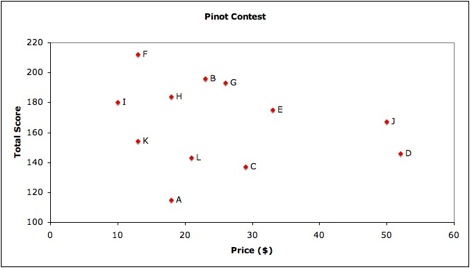The Brandeis Hoot has put up an audio recording of a Wednesday presentation from Jehuda Reinharz, the president of Brandeis University, and Peter French, its COO. There are summaries here and here which give an idea of how the presentation was received, but where I’m quoting either man, it’s straight from the horse’s mouth, as it were.
One thing which is clear to me now, and wasn’t clear before, is that Brandeis is still spending down its endowment. The endowment has a value of $549 million now, and according to French that figure will fall as low as $468 million in 2009, thanks mainly to the erosion of Brandeis’s $100 million reserve fund.
French said that the Brandeis endowment was just $190 million when Reinharz took over as president in 1994, which helps to put the university’s current problems in perspective. But it also helps to explain why Brandeis is facing such a crunch: a very large proportion of the Brandeis endowment has arrived relatively recently. Since Massachusetts law doesn’t let endowments spend the original principal, just income and capital gains, most of the endowment, eroded as it has been by market losses, is now untouchable.
All the same, Brandeis is going to be able to keep going for the next couple of years, and even draw a good $40 million per year out of its endowment, by tapping that $100 million reserve fund, which is part of the endowment but which doesn’t seem to have the same restrictions.
The problems at Brandeis are exacerbated, said French, by the fact that "we have historically relied on gifts to support our operations more than other institutions" — or, to put it another way, donations are a very important source of income for Brandeis, as opposed to simply being a way to boost the endowment, as they are elsewhere. Clearly Brandeis has seen a large part of its expected future donations disappear, thanks to Bernie Madoff: the promised and expected gifts didn’t "ripen" in time, to use the euphemistic phrase of the philanthropic world, which means that the donor has finally dropped dead.
Neither French nor Reinharz ever quite came out and said that they needed future cashflow to replace the gifts which have been nuked by Bernie Madoff and the recession, but that was the clear message all the same. And in the absence of any other way of getting money, they’ve decided to start raiding their art closet, otherwise known as the Rose Art Museum.
Weirdly, neither French nor Reinharz felt the need to explain why they were closing the museum: maybe they thought it was obvious. And no one asked them, either. But whenever journalists have asked the question, the answer has been the same: basically, it’s really difficult to sell art out of a museum, so if we’re going to be selling art, we’re going to have to close the museum first.
Still, they seem perfectly happy for their students to write about shuttering the Rose as a "large-scale cutback", or to talk about "the savings expected from the Rose". Let’s be absolutely clear, here: closing the Rose will not save Brandeis a significant amount of money. Brandeis does not subsidize the Rose; if anything, it’s the other way around. (Yes, there’s about $600,000 a year in indirect expenses for the building such as heating and water, but since Brandeis expects to continue to use the building for other purposes, those expenses aren’t going to go away.) Instead, Brandeis wants to use the Rose’s art collection as a money spigot, until such time as its endowment has recovered in value and it can start spending endowment funds again.
It’s a desperate decision to make — and it was clearly made quite recently: "As late as December, I went out to California to raise money for the Rose," said Reinharz. But he forcefully reiterated what French had said earlier:
We can’t dip into the endowment, because Massachussets law does not allow us to dip into the endowment. We can’t do it.
I have to say that I wonder how true that is. Is it not the case that if the university asks nicely and shows true hardship, then under the doctrine of cy pres, the Massachussets attorney general can grant a waiver and allow the university to dip into endowment funds which are worth less than their original principal amount?
And in any case it’s clear to me that closing the Rose is completely and utterly unnecessary. Tyler Green gave me grief for inadvertently referring to "deaccessioning laws" rather than AAMD rules or guidelines — he’s quite right that there’s no law against a university selling off art belonging to its museum.
Keeping the museum open would surely make selling the art more difficult — the director would surely object were any important works to be put on the block. But there should be someone standing up for the works, and making it clear that there’s a serious cultural downside to selling them off. I suspect that shuttering the museum is basically a way of minimizing the opposition to any given sale: if everything goes according to the trustees’ plan, then once the current firestorm is over, the university might be able to sell off individual works very quietly, without having anybody try to stand up for them and the role they play in the university’s cultural life.
I do still think that closing the museum is a way of getting around deaccessioning rules. But there’s something else going on here as well: if a painting is part of a museum, it has obvious cultural value. If the museum has been closed and the painting is in storage, then just about any fate for that painting becomes preferable to the status quo.
The Rose’s collection is marked on the Brandeis endowment’s books at $1 per artwork. Right now, when the works are exhibited in a first-rate museum, it’s clear that their value is much higher than that. But if the museum closes and they’re crated up and stored, then suddenly the optics change. Which of these two propositions would you rather put to trustees?
- "We have a priceless artwork which is a central part of a highly-respected museum. Would you mind if we sold it off to raise some money?"
- "We have a priceless artwork sitting in storage and doing no good to anybody. Would you mind if we sold it off to raise some money?"
To put it another way: those artworks which Brandeis wishes to sell, it first puts in storage. It’s a nasty and dishonest ploy on both an intellectual and an ethical level. And Brandeis shouldn’t be allowed to get away with it.






